Wooster, OH – The first installment of student photos from Earth Materials gave a personalized perspective on materials in our lives. The second installment looks at the built environment around us.

Devin Henson’s (’21) image shows a beloved Wooster tradition.
Devin writes:
My entry examines how Earth materials are used in the physical infrastructure of the College of Wooster campus and form a part of community tradition, as well as the consequences of this tradition. Multiple footpaths on campus are made of local red bricks, many of which are labeled either “Wooster Ohio” or “Wooster Paver.” These bricks are made of sand and clay and were fired at a high temperature during production. Sand and clay are sedimentary particles of different grain sizes. Sand refers to sedimentary particles with a grain size of 0.0625-2.0 mm, while clay refers to sedimentary particles with a grain size of less than 0.0039 mm. Wooster was the location of a brick company because of its high-quality clay. The hydrous aluminum silicates in this clay produce strong bricks and are thus optimal for the brickmaking process.
It is customary for graduating seniors to dig up and take one of the bricks on campus after completing their Independent Study. Part of the tradition, at least in the way it was passed down to me, is that it is unlucky to take a brick before submitting IS. In addition, the taking of the brick is supposed to happen at night (given that it is technically considered the theft of College property). That last point brings up an important factor in both this tradition and the Earth sciences – sustainability. The company that produced the labeled bricks no longer exists. As such, when the labeled bricks are removed, they are replaced with modern unlabeled ones. Eventually, there will be no labeled bricks left on campus, and the tradition will be forced to change (or will end entirely). In this way, we can see that the removal of Wooster bricks is a microcosm for other issues surrounding Earth materials. Tradition is a powerful force, and it can often lead us to engage in practices that are unsustainable because we value short term gain over long term consequences.

Richard Torres’ (’23) image captures a local landmark.
Richard writes:
King Philip’s Mill (pictured) is one of the many mills in Fall River made of Fall River Granite. Fall River granite comes from the Fall River Batholith which was easiest to mine at the higher parts of the city and because of the dangers of transporting stone downhill most mills along the water front were made of bricks[1]. Most mills are made of brick, but granite was readily available and cheaper to use and was much harder than other granites[2]. The factories would sometimes get the granite from where they where building, this made large basements. Fall River granite looks grey from far away but close up it looks pink due to the felspar it contains[3].
Fall River Granite would provide the foundation for Fall River to become one of the richest cities in the world. Many factories, civil buildings, and Mansions were made of Fall River Granite and many still stand today. Most of the Factory buildings no longer operate as such but have been converted for other purposes. King Philip’s Mill was designated a historic place but now is being torn down to make room for single-family homes.
[1] https://keckgeology.org/files/pdf/symvol/21st/avalonia/mcmenamin_beuthin.pdf
[2] https://blog.mass.gov/transportation/massdot-highway/fall-river-granite-salvaging-the-past-for-the-future/
[3] https://www.southcoasttoday.com/article/20110714/PUB03/107140358








 The slump from above. Note the arcuate scarp that marks the upper reaches of the slump block – a series of grabens and scarps stair-step their way into the valley.
The slump from above. Note the arcuate scarp that marks the upper reaches of the slump block – a series of grabens and scarps stair-step their way into the valley.










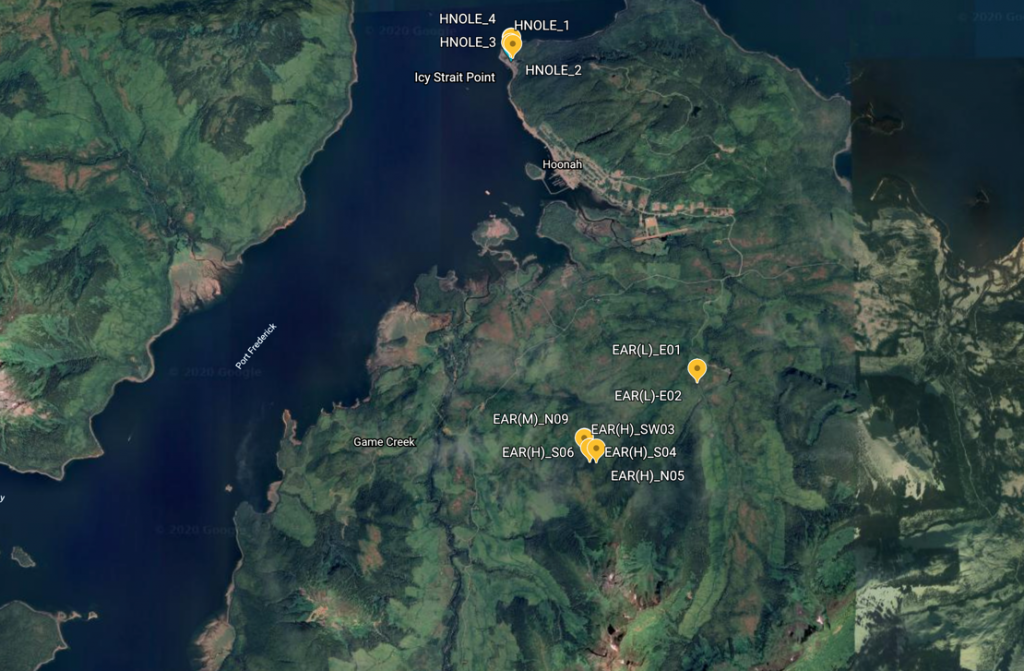
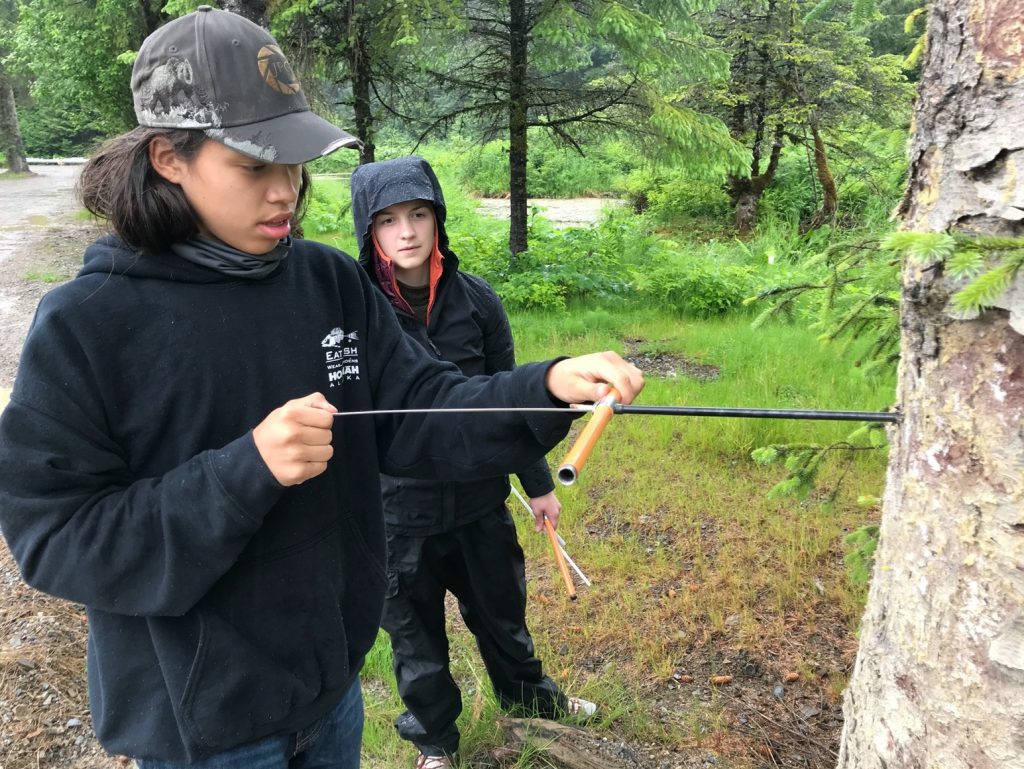 The group shown coring a Sika spruce just outside of town.
The group shown coring a Sika spruce just outside of town.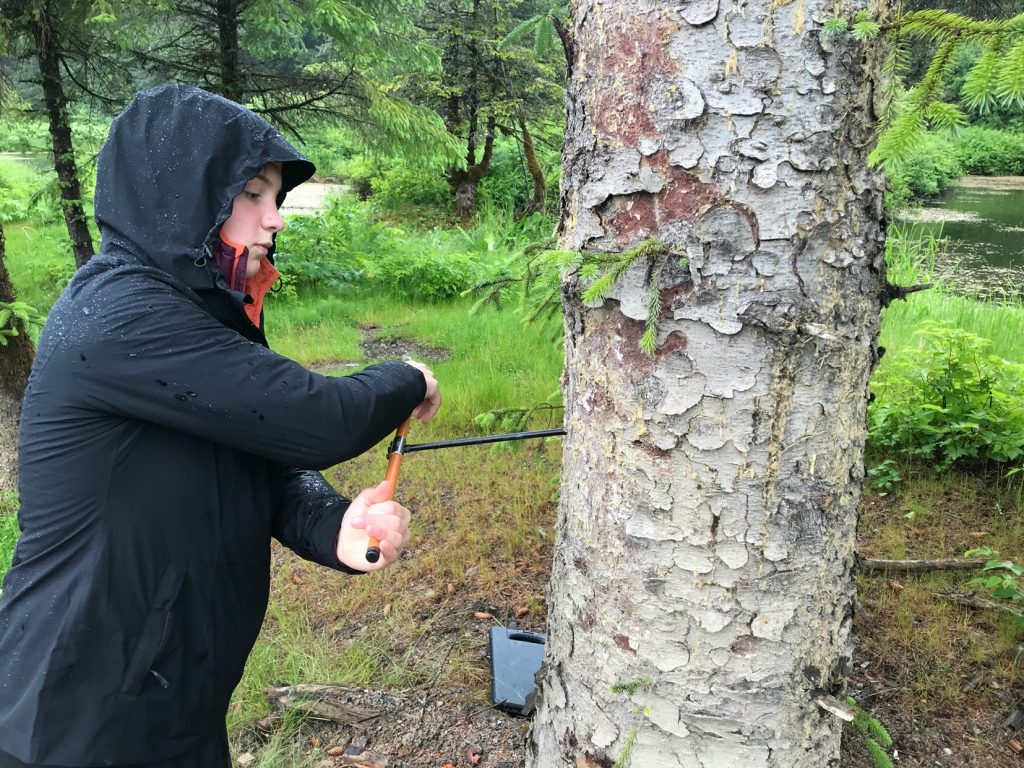 More coring – this time in the rain.
More coring – this time in the rain.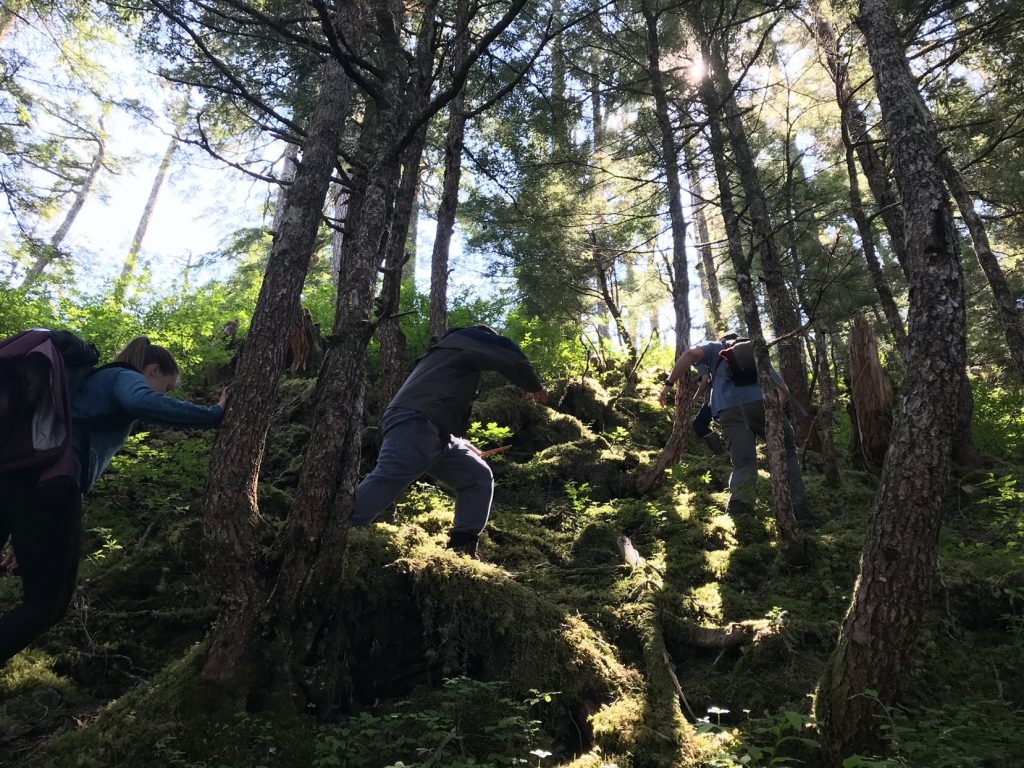 The steep climb up the flank of Ear Mountain to find the old Mountain Hemlocks.
The steep climb up the flank of Ear Mountain to find the old Mountain Hemlocks. Comparisons of the fast growing Sitka Spruce and the slow growth of the higher elevation Mountain Hemlock.
Comparisons of the fast growing Sitka Spruce and the slow growth of the higher elevation Mountain Hemlock. The cores from the hemlock some over 400 years old show lots of stress , clinging to the mountain side and battered by storms. They are also showing a possible drop in ring-width over time
The cores from the hemlock some over 400 years old show lots of stress , clinging to the mountain side and battered by storms. They are also showing a possible drop in ring-width over time 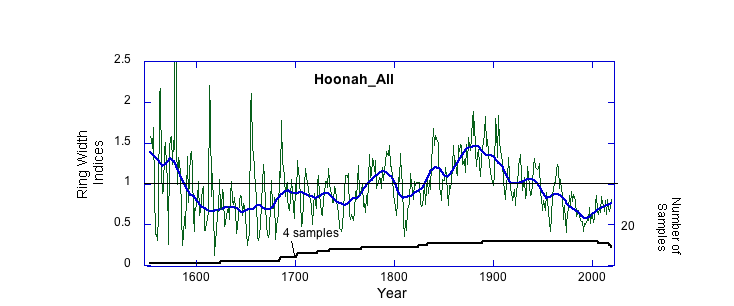 So we measured the ring-widths (Nick Wiesenberg and Melita Wiles did) and then we compiled the ring-width data into a chronology above. This chronology is the full record going back into the 16th century
So we measured the ring-widths (Nick Wiesenberg and Melita Wiles did) and then we compiled the ring-width data into a chronology above. This chronology is the full record going back into the 16th century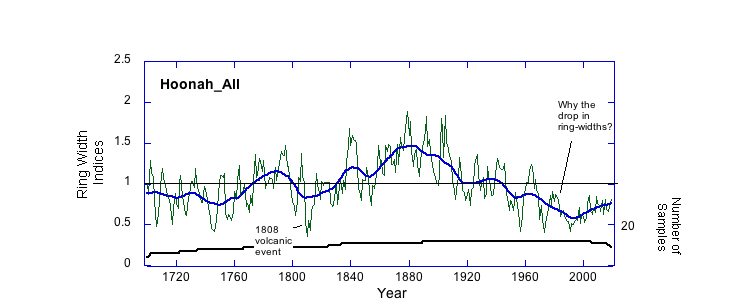 This chronology is truncated at 1720 or so when we had at least 4 samples. The most narrow rings follow the 1808 unknown eruption that cooled much of the region – it is unknown as no one knows where the volcano that erupted is located – it is recognized in ice cores. The other intriguing feature is the relatively recent (last 50 year) drop in ring widths. It may be due to increased evapotranspiration demands with increasing summer minimum temperatures. There is a correlation of -0.39 (p<0.04) between tree growth and average April-August minimum temperatures. Other studies have shown that warming night time temperatures lead to increased respiration at night and along with possible greater ET demand or increased cloudiness during the day there may be a decrease in photosynthesis leading to decreased carbon uptake (Sullivan et al., 2015). Interestingly, tthe work of Mazvita Chikomo done this summer as part of the AMRE project, discovered some pretty strong negative correlations between Mt. Hemlock growth and minimum monthly temperature records in Prince William Sound – perhaps there is a link? This is a promising line of research to further investigate the health of Mt. Hemlock in the region and it is something we plan to pursue with more samples in the future.
This chronology is truncated at 1720 or so when we had at least 4 samples. The most narrow rings follow the 1808 unknown eruption that cooled much of the region – it is unknown as no one knows where the volcano that erupted is located – it is recognized in ice cores. The other intriguing feature is the relatively recent (last 50 year) drop in ring widths. It may be due to increased evapotranspiration demands with increasing summer minimum temperatures. There is a correlation of -0.39 (p<0.04) between tree growth and average April-August minimum temperatures. Other studies have shown that warming night time temperatures lead to increased respiration at night and along with possible greater ET demand or increased cloudiness during the day there may be a decrease in photosynthesis leading to decreased carbon uptake (Sullivan et al., 2015). Interestingly, tthe work of Mazvita Chikomo done this summer as part of the AMRE project, discovered some pretty strong negative correlations between Mt. Hemlock growth and minimum monthly temperature records in Prince William Sound – perhaps there is a link? This is a promising line of research to further investigate the health of Mt. Hemlock in the region and it is something we plan to pursue with more samples in the future. 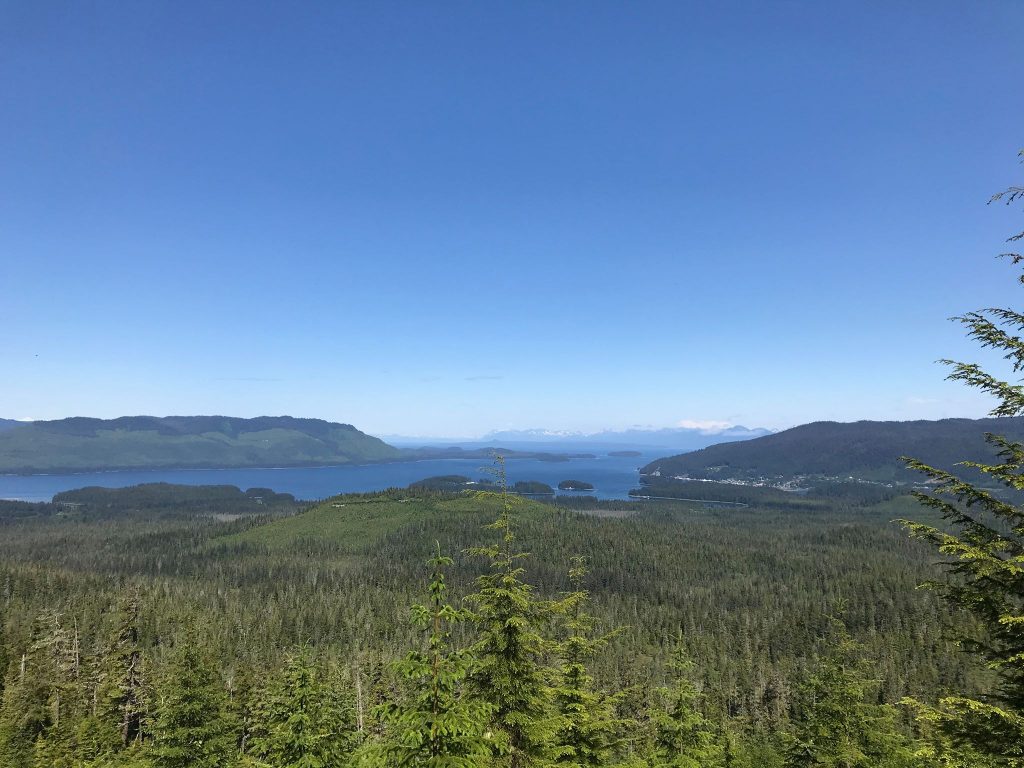



 The team coring a White Oak.
The team coring a White Oak.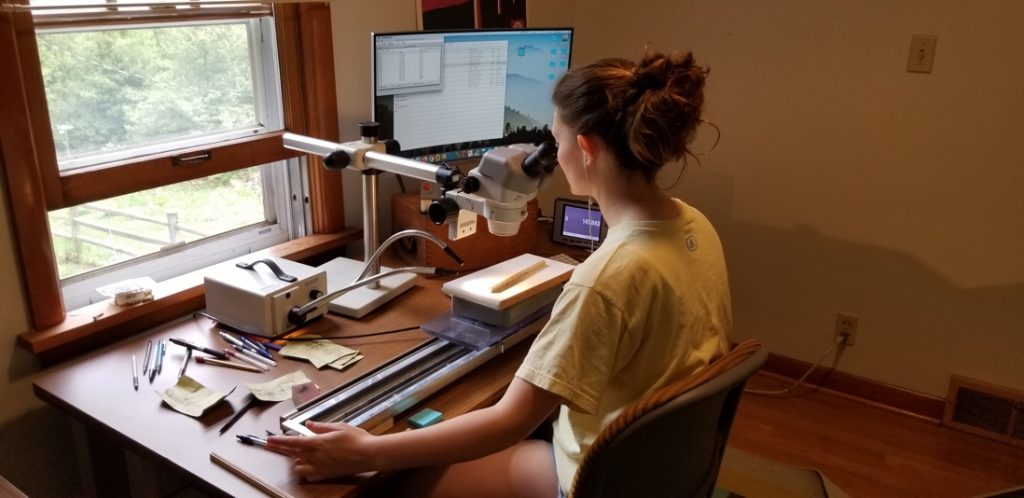 Measuring tree cores from Kinney Field in the Lab.
Measuring tree cores from Kinney Field in the Lab.
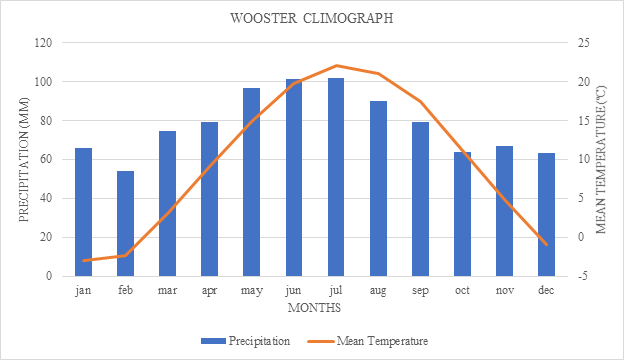
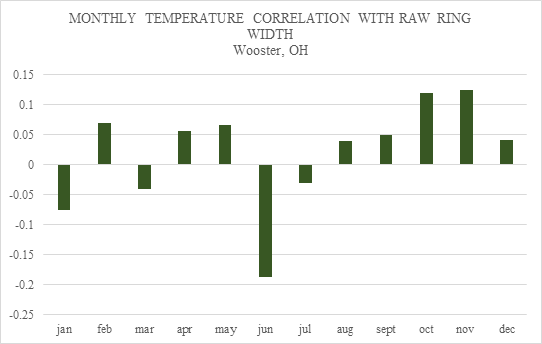
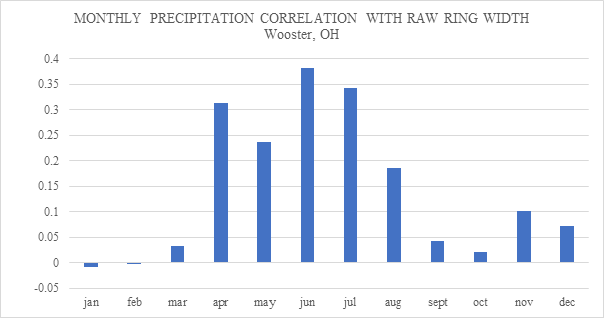
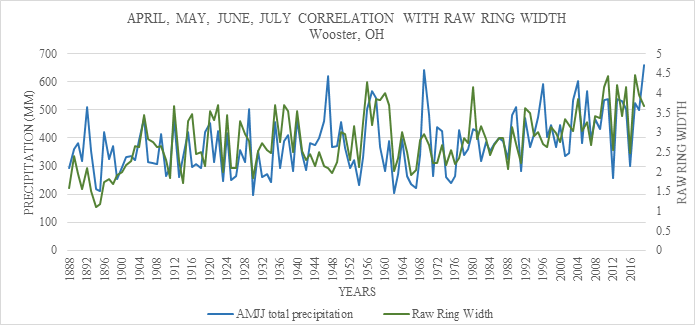
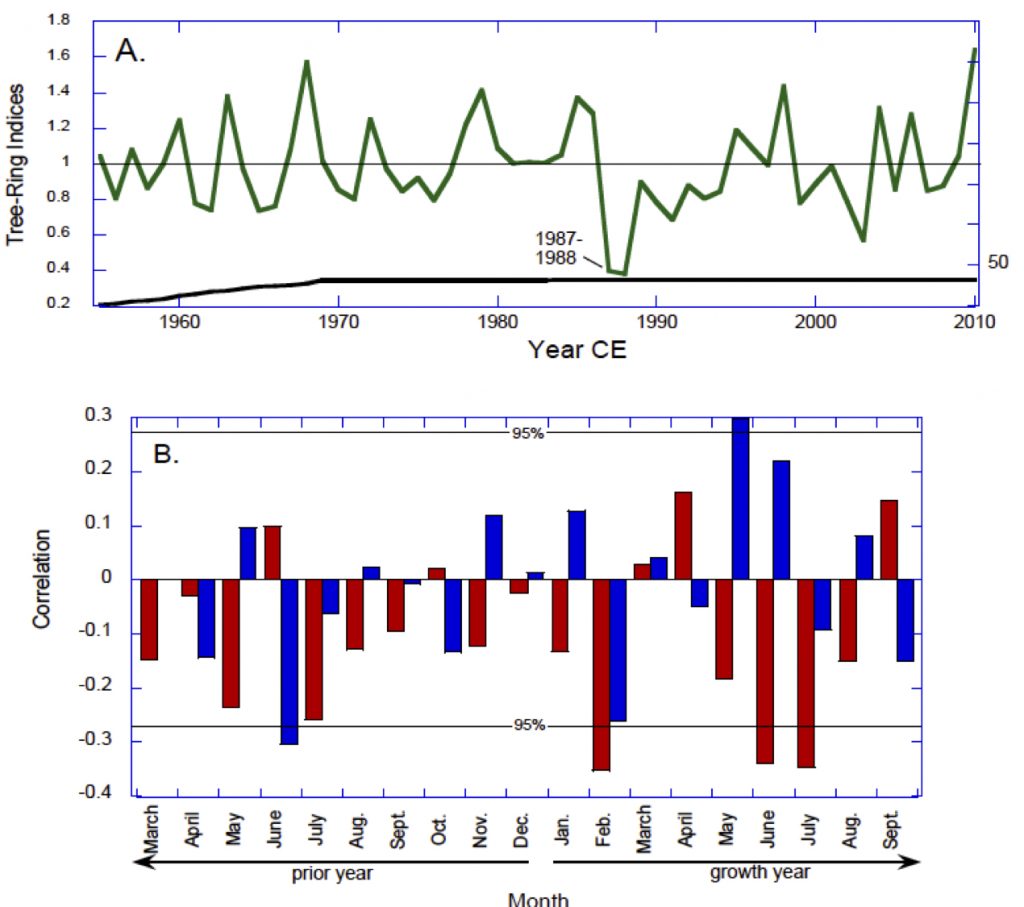
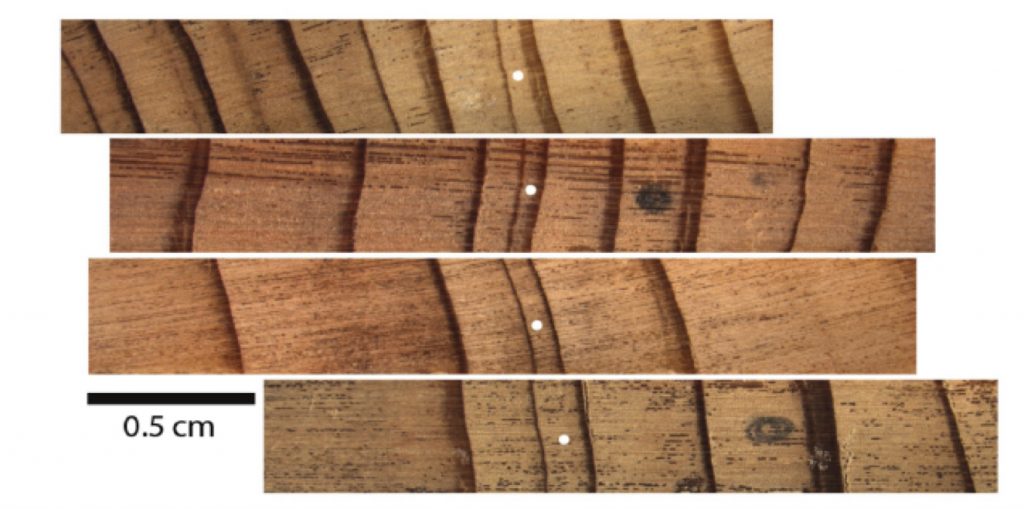
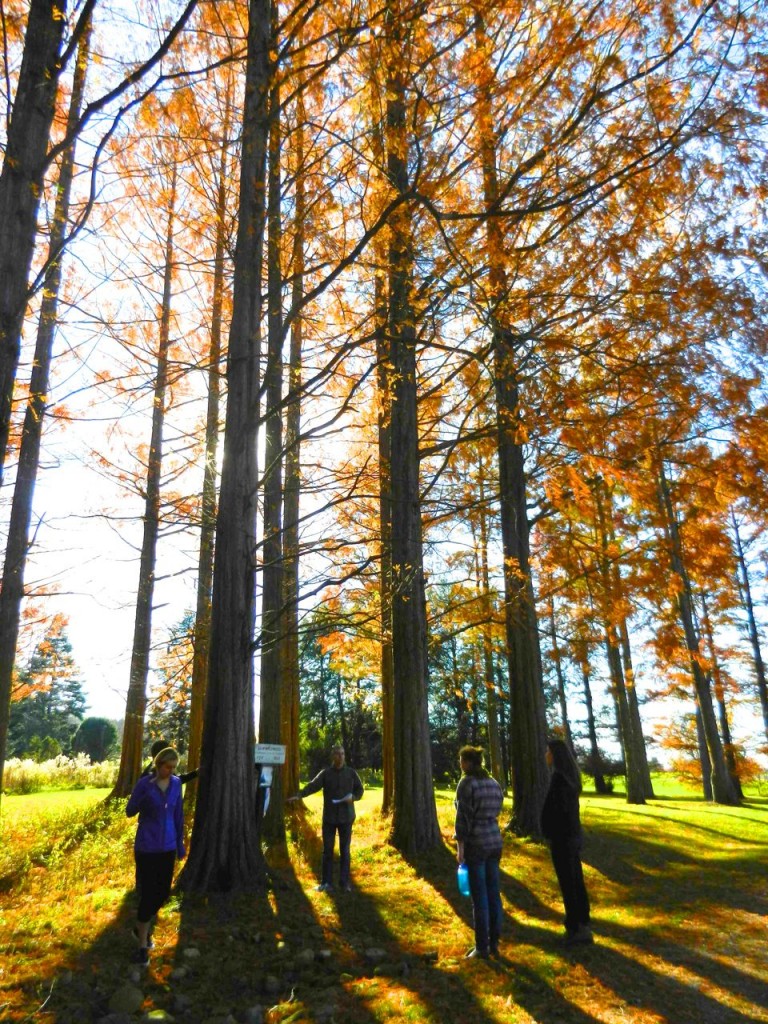 The College of Wooster Paleoclimate class mulls around the Dawn Redwood stand.
The College of Wooster Paleoclimate class mulls around the Dawn Redwood stand. 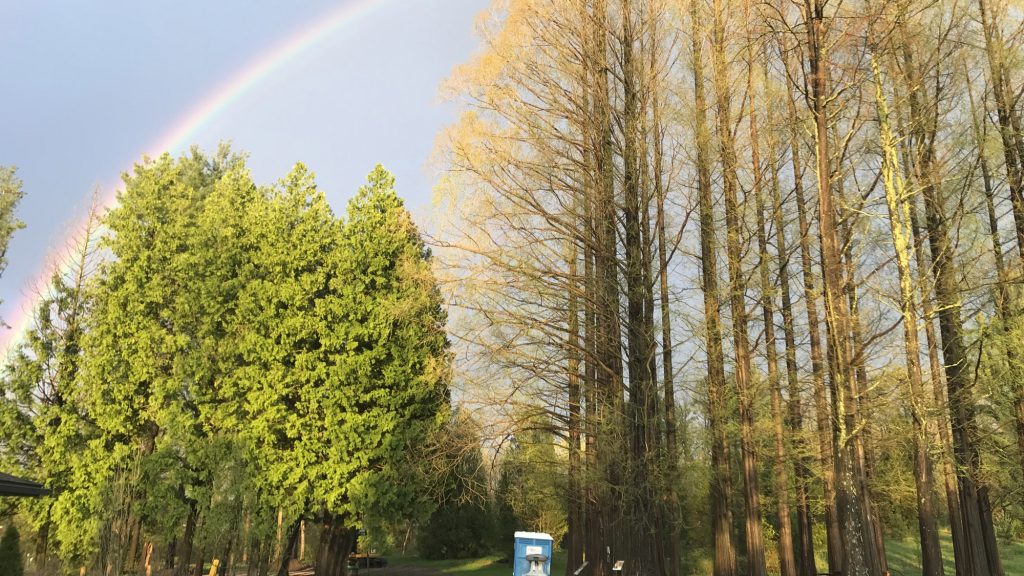 Another great photo of Dawn Redwoods – they are deciduous conifers so this photo in the early spring before growth.
Another great photo of Dawn Redwoods – they are deciduous conifers so this photo in the early spring before growth.